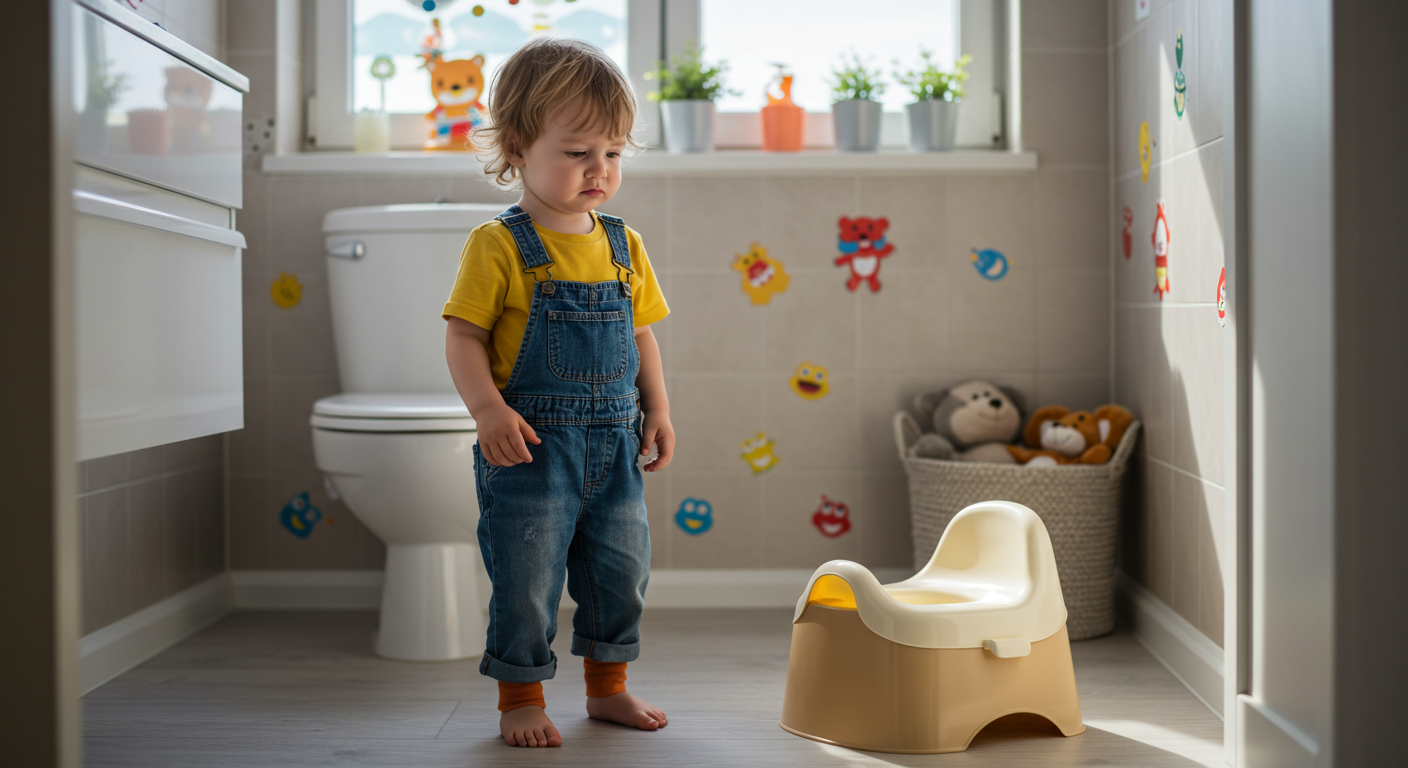Potty Training Accidents,
Regression, and Common Problems
Helping Your Child Succeed Without Stress

Potty training is a major developmental milestone, and like all learning experiences, it comes with its own set of challenges—including accidents. It's essential to approach potty training accidents with patience, understanding, and effective strategies that support your child's growth without creating anxiety or shame. Every child will have setbacks in the potty training process. In fact, accidents are a normal and expected part of learning to use the toilet.
This guide will walk you through how to handle potty training accidents during the initial training days and what to do if your child begins experiencing accidents after having been potty trained. We'll also discuss how to prevent regression and encourage positive toilet habits long term.
Understanding Potty Training Accidents
Before diving into how to handle accidents, it’s important to understand why they happen. Whether it’s bladder accidents during play or bowel movement accidents at bedtime, children are adjusting to new physical sensations, new routines, and sometimes emotional changes. Potty training accidents occur because:
- Your child is still learning to recognize the urge to go
- They are distracted or engaged in activities
- They are anxious, nervous, or resistant to toilet training
- There is a change in routine (e.g., new daycare, new sibling)
- Physical issues such as constipation or urinary tract infections
Whatever the cause, potty training accidents are not a sign of failure. Instead, they are opportunities to reinforce healthy habits and emotional support.
Day-by-Day Response to Potty Training Accidents
Day One: Introduction to Toilet Training
The first day of potty training is crucial. It sets the tone for your child’s experience and builds a foundation of trust and learning.
If your child has an accident on day one:
- Do not scold. This can lead to resistance or fear.
- Instead, say gently: “Uh oh! It looks like [child’s name] needs to practice going potty!”
- Do practice runs by walking to the toilet from various parts of the house, pulling down pants, and sitting on the toilet. Repeat 5–10 times.
- If your child becomes upset or resistant, scale back. Only practice sitting once and say neutrally, “Poop and pee go in the potty.”
Staying calm and neutral helps build your child’s confidence instead of creating negative associations with using the bathroom.
Day Two: Maintenance and Practice
On the second day of potty training, your child is still adapting. It’s important to continue reinforcing the routine.
If accidents occur:
- Stay calm and neutral. Avoid expressions of frustration or disappointment.
- Repeat the phrase: “Uh oh! It looks like [child’s name] needs to practice going potty!”
- Practice runs should now be limited to 1–2 times.
- Again, if your child shows signs of frustration, do a single sit and calmly remind them: “Poop and pee go in the potty.”
Repetition and consistency are key during this phase.
Day Three: Potty Training Accidents in Public
Introducing your child to public restrooms can be intimidating for both parent and child. Day three is typically when this begins.
If your child has an accident while out in public:
- Remain calm and supportive. Avoid scolding or rushing.
- Say: “Uh oh! It looks like [child’s name] needs to practice going potty!”
- Lead your child to a nearby restroom, assist them in pulling down their pants, and have them sit on the toilet—even if they don’t need to go.
- After changing clothes, return briefly to the area where the accident occurred and practice going again, using the phrase: “When you have to go, you have to hurry to the bathroom.”
These experiences help build awareness of real-world potty cues and consequences.
Post-Training Potty Accidents

Even after your child is officially toilet trained, potty training accidents may still occur from time to time. This is completely normal and expected, especially within the first year after initial training.
When an accident happens:
- Simply change your child’s clothes.
- Calmly remind them, “Poop and pee go in the toilet.”
- Avoid any negative expressions such as sighs, eye-rolling, or visible annoyance. Children are sensitive to these reactions, which can lead to regression.
If accidents happen more than 2–3 times a week, it may indicate the need for a refresher period:
- Do 4–5 practice runs similar to day one.
- Limit distractions such as toys or screen time, saying: “Uh oh, you must have too many distractions. When you start going on the toilet again, you can have some of your toys back.”
This gently reinforces the importance of prioritizing the bathroom when the urge arises.
Potty Training Regression: What to Watch For
Regression can be frustrating but is often a sign of stress, change, or a need for re-teaching. Common signs include:
- Increased frequency of accidents
- Refusal to use the toilet
- Hiding during bowel movements
What to do:
- Revisit early potty training strategies
- Create a calm and encouraging environment
- Use tools like potty charts or small rewards
- Ensure your child is physically well (e.g., no UTIs or constipation)
Tips to Prevent Potty Training Accidents
Final Thoughts: Stay Encouraging and Positive
Every child learns at their own pace. Potty training accidents are not only common, they are part of the learning curve. Your job as a parent or caregiver is to respond with consistency, patience, and a lot of love.
With the right approach, your child will gradually learn to listen to their body, recognize when they need to go, and confidently use the toilet both at home and in public. Stay calm, stay committed, and remember—you’re building skills that will last a lifetime.
Additional Resources:
If you haven't already, be sure to check out my ebooks, now on Amazon!

